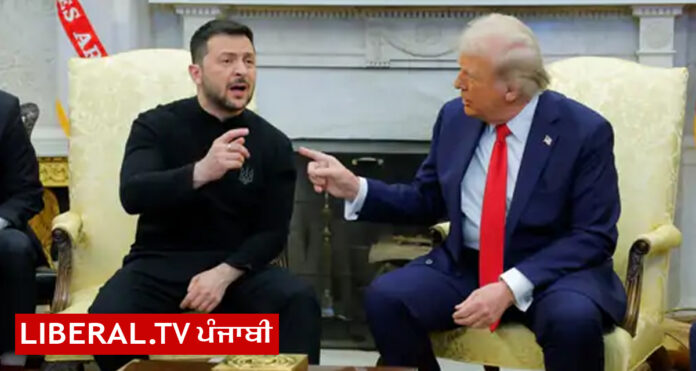In a stunning turn of events on Friday, what was meant to be a diplomatic meeting between US President Donald Trump and Ukrainian President Volodymyr Zelenskyy quickly descended into chaos, leaving both leaders visibly at odds and triggering a dramatic exit. The day began with the typical pleasantries: handshakes, smiles, and the kind of formalities that usually precede high-stakes diplomacy. Yet, within the span of an hour, the carefully crafted veneer of international diplomacy crumbled under the weight of heated rhetoric and personal attacks.
For the first 30 minutes, the atmosphere was largely cordial. Trump, in characteristic fashion, took the opportunity to boast about his own foreign policy record, suggesting that had he remained in power, the Russia-Ukraine war never would have occurred. It was a statement reflective of his broader “what if” rhetoric that often seeks to rewrite history in his favor. As the conversation shifted toward the ongoing war, however, things began to take a troubling turn. Trump, in a rare instance of nuance, attempted to deflect blame, casting the war as something that could have been avoided if Ukraine had handled the situation differently—ignoring the fact that it was Russia’s unprovoked invasion in 2022 that sparked the conflict in the first place.
It was Vice President JD Vance’s interjection that truly set the stage for the breakdown. When a reporter asked Trump about his alignment with Russian President Vladimir Putin, Vance—a relative newcomer to foreign diplomacy—stepped into the fray with a message of “diplomacy over conflict.” He argued that Trump had been tough on Putin during his presidency, and that perhaps the way forward for Ukraine was to engage in more dialogue with Russia. It was a seemingly benign suggestion, but it was enough to send Zelenskyy into a furious tirade.
Zelenskyy, already frustrated by the US’s ambiguous stance on the war, launched into a fiery defense of Ukraine’s position. He pointed to Russia’s ongoing occupation of Ukrainian territory, including Crimea, and the failure of diplomatic efforts, such as the 2015 ceasefire agreement, which Putin had blatantly violated. The Ukrainian president, visibly angered, chastised Vance for advocating diplomacy with a leader who had continually broken agreements and killed civilians. “What kind of diplomacy, JD, are you speaking about?” Zelenskyy demanded, his voice rising in frustration.
What followed was a tense exchange between the two men, with Vance accusing Zelenskyy of disrespecting Trump, who he claimed was trying to bring an end to the conflict. Vance, whose silence had been his trademark during previous international meetings, took the gloves off, accusing Zelenskyy of exploiting American support for propaganda. “Do you think it’s respectful to come to the Oval Office and attack the administration that is trying to prevent the destruction of your country?” he asked, before continuing his criticism of Ukraine’s military practices, particularly conscripting soldiers to the front lines.
At this point, the diplomatic façade had crumbled entirely. Zelenskyy, folding his arms and adopting a defensive posture, shot back with a question that hit at the heart of the issue: “Have you been to Ukraine? Did you see what problems we have?” The question was a pointed reminder that the horrors of war were not just abstract discussions from the comfort of Washington, but the lived reality for millions of Ukrainians.
Trump, who had been largely silent throughout the exchange, finally intervened, defending Vance’s stance and telling Zelenskyy, “You are in no position to dictate how we are going to feel.” The tension, already thick, reached its boiling point when Vance pressed Zelenskyy on whether he had even expressed gratitude for the support the US had provided. Zelenskyy, perhaps weary of the implied disrespect, snapped back: “A lot of times.”
What followed was a brief but intense shouting match, before Zelenskyy, visibly enraged, stormed out of the White House. The carefully planned meeting had imploded in spectacular fashion, leaving both sides in tatters.
This debacle highlights the profound disconnect between Ukraine and the US, particularly when it comes to the level of commitment and understanding required for the resolution of such a devastating conflict. While Trump and Vance may believe that diplomacy is the key to peace, Zelenskyy’s outburst serves as a stark reminder of the real human toll of this war—one that cannot simply be brushed aside with political platitudes. For Ukraine, the stakes are existential; for the US, they are geopolitical, and the meeting served to underline the chasm between these two perspectives. It remains to be seen whether this fractured encounter will lead to a more candid dialogue—or whether it will further embolden the voices of isolationism within the White House.



